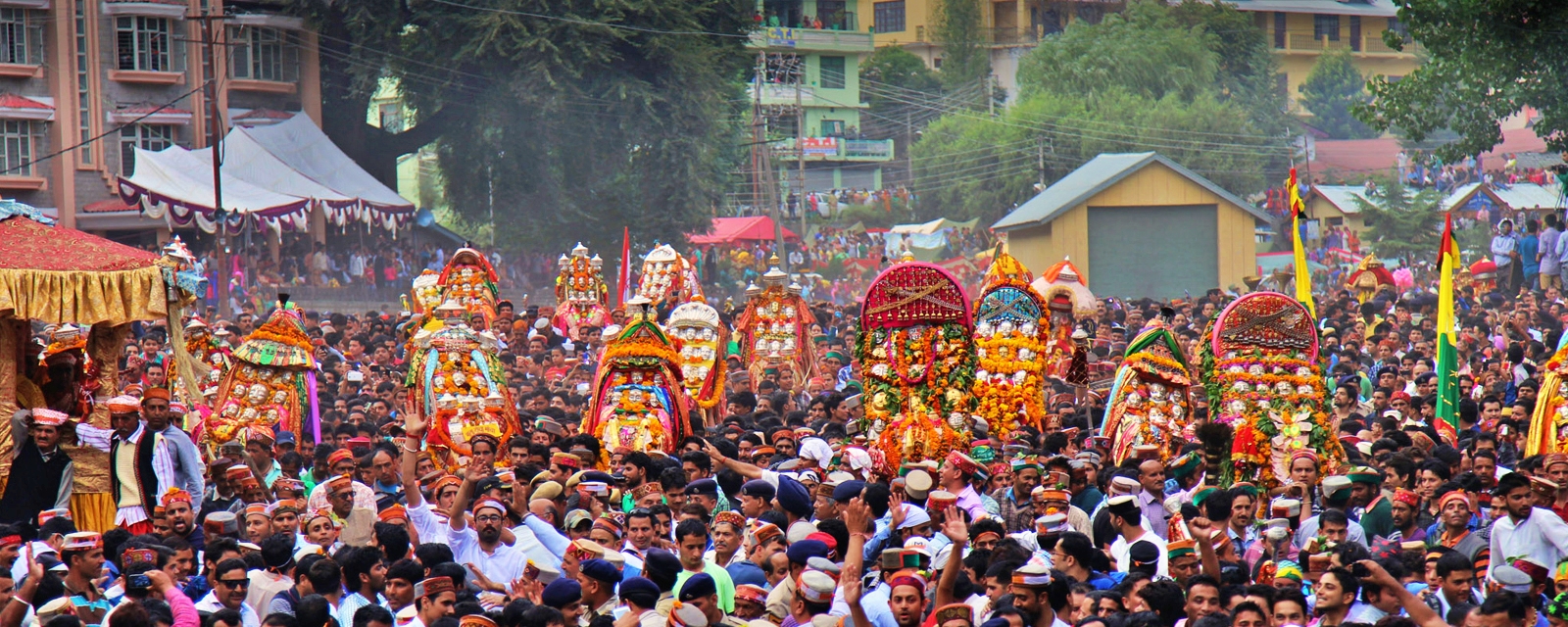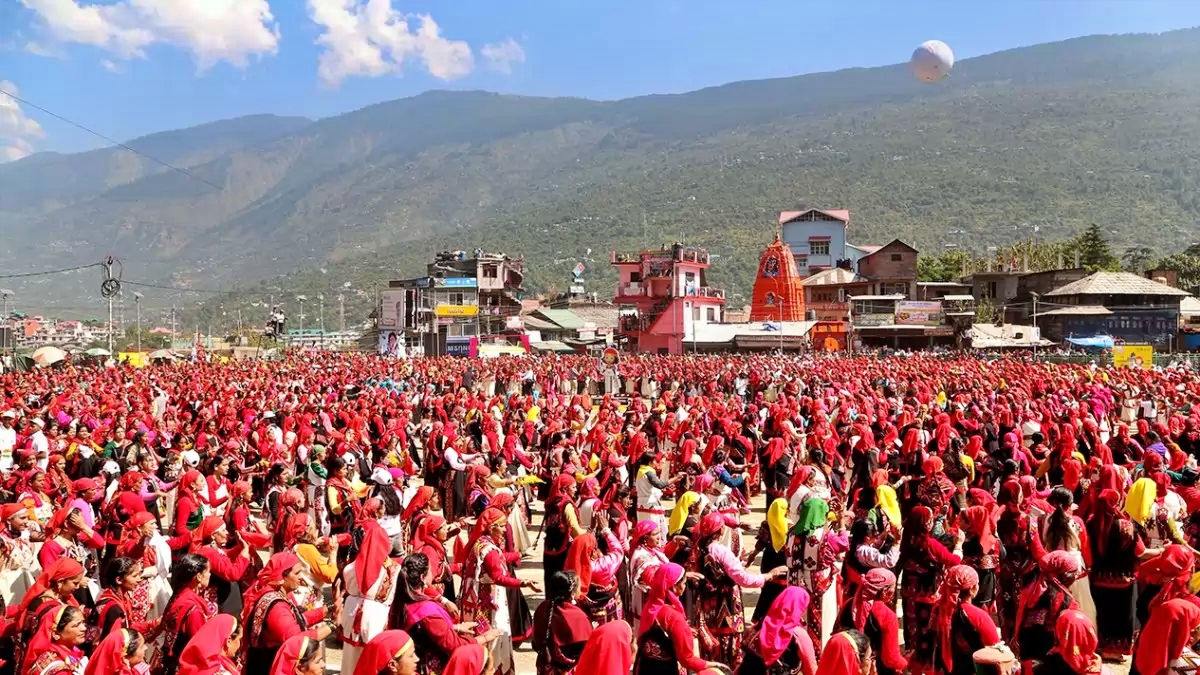Kullu: While the ongoing festival ends across the country with Vijayadashami on Tuesday, the Kullu International Dussehra will start from the same day in Himachal Pradesh. The Kullu International Dussehra festival begins on Vijayadashami in the state and people from across the country as well as abroad come here to participate at this festival.
Dussehra is celebrated in Himachal Pradesh's Kullu district as International Dussehra. More than 300 Gods and Goddesses of Kullu district are worshipped on the occasion. Hidimba Mata, is the main Goddess and her arrival in the Dussehra festival is considered very important. It is believed that the festival cannot be organised without Mata Hidimba.

Historian Surat Thakur said that according to religious beliefs, Lord Ram shot Ravana with an arrow on the day of Vijayadashami, but he died seven days later. This is why International Dussehra festival is celebrated in Kullu for a week beginning from Vijayadashami.
On the first day of Kullu International Dussehra festival, the Goddess reaches the palace with her Haryanas. After worshiping the Mother Goddess, Lord Raghunath is brought to Dhalpur. The Mother Goddess stays at her temporary camp in Dhalpur during the seven-day Dussehra festival. During this time, thousands of devotees reach here to have darshan of Goddess Hidimba.

The setting of Dev Mahakumbh is completed with the blessings of Hidimba Mata. At the same time, on Lanka Dahan day, the chariot of Mata Hidimba moves in the front and sacrifice is offered to the Goddess. The priest takes gur and a vessel for burning incense sticks. As soon as the ritual of sacrifice is completed, the chariot of the Goddess returns to the temple and the festival also ends.
Historian Thakur said that Goddess Hidimba is the family deity of the Manipal royal family and also called the grandmother of the royal family. It is believed that Goddess Hidimba had appeared before King Vihang Manipal in the form of an old woman. King Vihang carried the old woman on his back to the hills. Happy with the king, Mata Hidimba transformed into her true form and told the king that as far as he could see the property belonged to him. After which, Mata Hidimba declared Vihang Manipal the king of the entire area and since then the royal family considers her as their grandmother.

According to the religious tradition, Mata Hidimba leaves for Dhalpur from the tourist city Manali on the Navami of Navratri and rests at Ramshila in the evening. When the Goddess reaches the Hanuman temple in Ramshila, Lord Raghunath's stick is carried to welcome her respectfully. After this, Mata Hidimba enters Raghunathpur and the royal family performs all the traditions. On the sixth day of Kullu Dussehra, the Mohalla Utsav is started.
According to Thakur, Kullu Dussehra festival is being celebrated since the 16th century. The statue of Mata Hidimba is installed at the temple located in Dhungri of Manali. Every year, thousands of tourists and devotees come to take darshan of Mother Goddess. There is a natural rock inside the temple that is considered to be the place of the Goddess. The rock is called Dhung in the local dialect, hence the goddess is called Dhungri Devi. This temple was built by the ruler of Kallu, Bahadur Singh in 1553 AD.

Kullu Dussehra bagged the state-level status in 1966. In 1970, an announcement was made for an international status, but it was not recognised. It was only later in 2017 that Kullu Dussehra was given the status of an international festival. Notably, in 2022, Narendra Modi was the first Prime Minister who participated in the Kullu International Dussehra festival.
Also Read: Kolkata's Durga Puja pandals transform with unique themes, sending powerful messages
Ravana's effigy is burnt across the country on Vijayadashami but neither Lanka Dahan nor Ravana's effigy is burnt in Kullu Dussehra. This festival continues for a week from the tenth day of Shukla Paksha of Ashwin month. On the seventh day, Mata Hidimba's chariot and Lord Raghunath return to their temple marking its end.
Also Read: At Guwahati's historic Kamakhya temple, celebration of Durga Puja without idols



